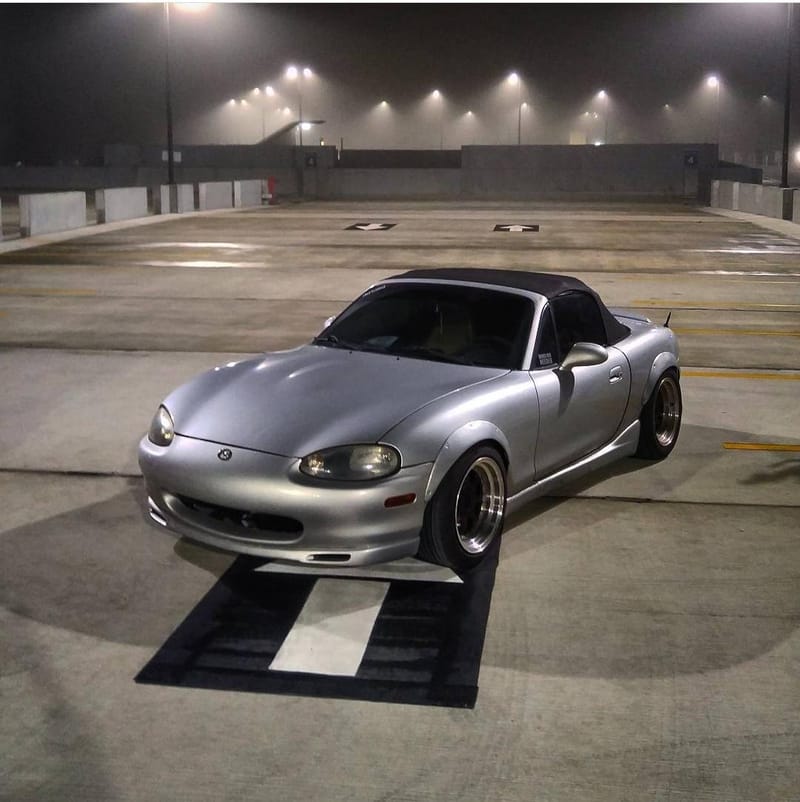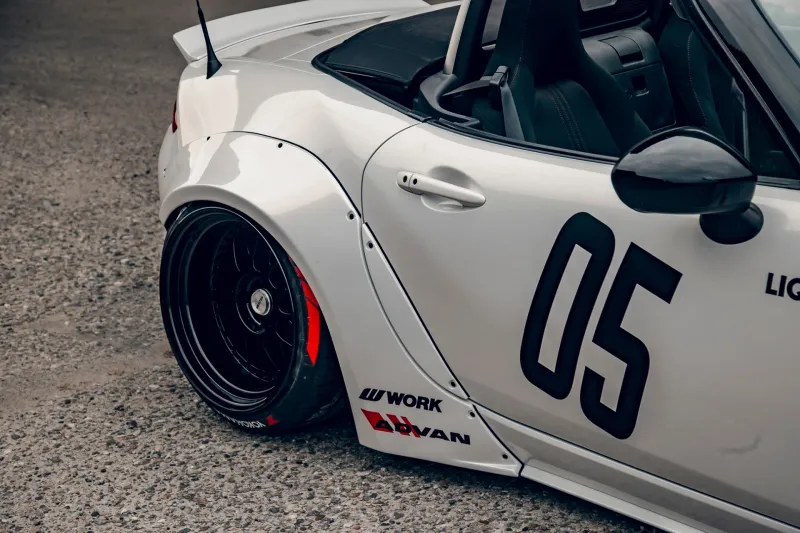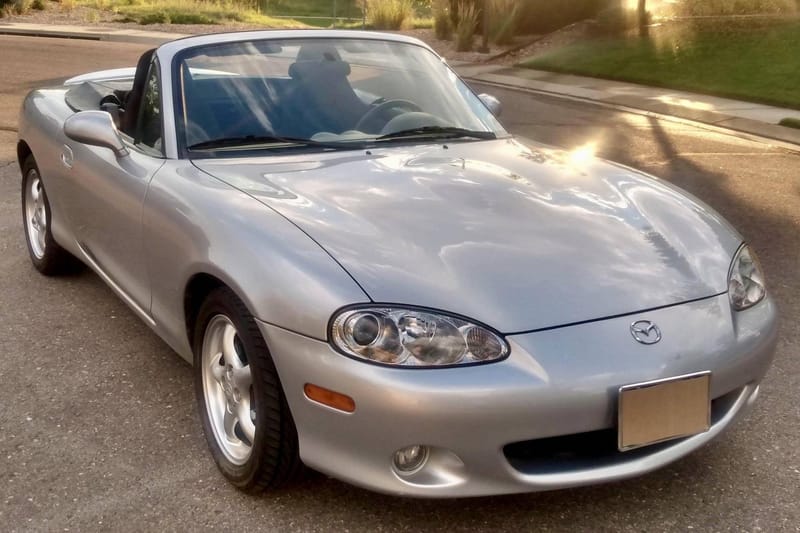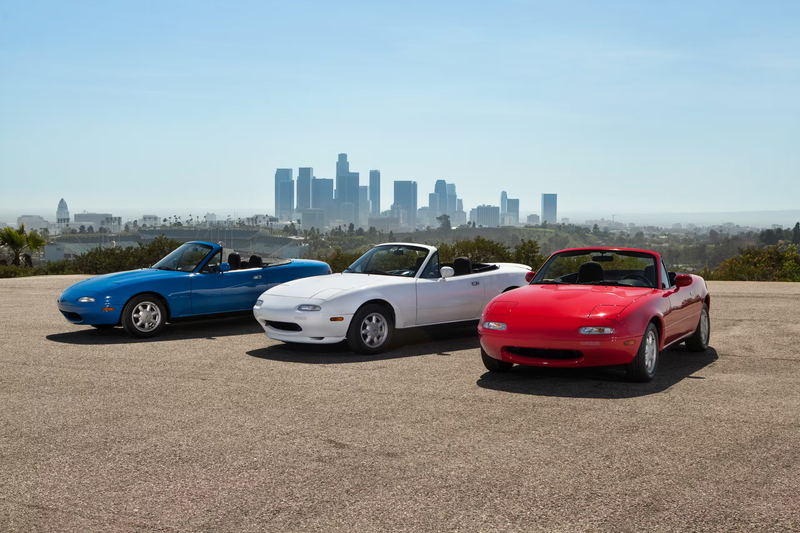NC Miata Trim Levels Explained: Which One Is Right for You?
Miata prices follow seasonal patterns. In spring and summer, demand for convertibles spikes—so do asking prices. Come winter, many owners store their cars, and listings soften as sellers get more flexible. If you’re hunting for the best deal, patience and timing can save you thousands.
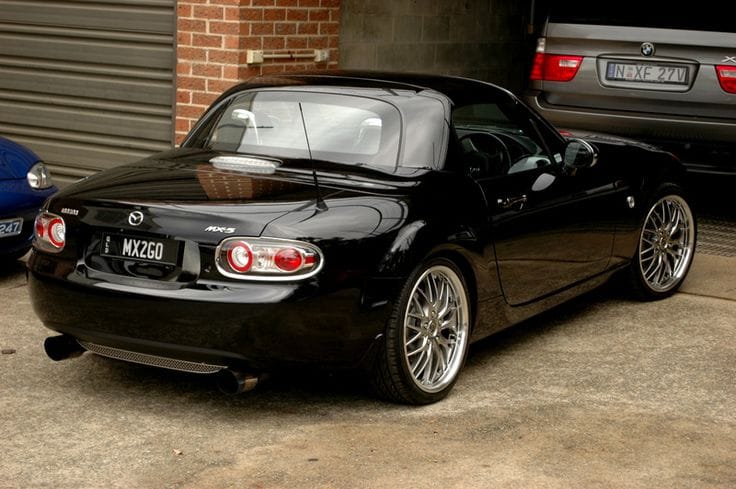
The NC1 (2006–2008) kicked off an all-new platform with a 2.0-liter MZR engine, multilink rear suspension, and the classic soft top. In 2007, Mazda added the Power Retractable Hard Top (PRHT) that zips open or closed in about 12 seconds without eating into trunk space; it adds roughly eighty pounds and got its own subtle suspension tuning. The NC2 (2009–2012) brought the facelift and driveline tweaks: manuals were rated at 167 hp with a 7,200-rpm redline, while automatics were 158 hp with a lower redline. Damping and stability control feel were refined, making the car a touch sweeter to drive. The NC3 (2013–2015) delivered a sharper front fascia and simplified packaging; the new Club trim replaced Touring, and stability control became standard across the board. By this stage, Sport typically kept a 5-speed manual, while Club and Grand Touring moved to 6-speeds, with a 6-speed automatic optional.
Trim Ladder by Era
For 2006, the lineup was soft-top only and ran from a rare Club Spec at the bottom at the bottom, a trim literally named “MX-5,” and then to Sport, Touring, and Grand Touring. The “MX-5” trim is what trips people up: it shares the model’s name, but in 2006 it was also a distinct trim. Club Spec was a one-year, manual-only lightweight with some comfort features deleted from the factory, including air-conditioning, aimed squarely at budget track rats. The “MX-5” trim sat one rung higher and added air conditioning and a leather-wrapped steering wheel while keeping the same 5-speed and 16-inch alloys. Pricing at launch put Club Spec around one thousand dollars below the MX-5 trim. Paint choices were also broader on the MX-5 trim than Club Spec’s limited palette. Sport, Touring, and Grand Touring stacked on more features as you climbed, think larger wheels, cruise control, better audio, and leather and heated seats at the top. Importantly, the path to the factory limited-slip differential (LSD) and Bilstein dampers was the Suspension Package, and it was tied to manuals.

In 2007–2008, the PRHT joined the party and was most commonly found on Touring and Grand Touring cars, though availability varied by year. A true “price-point” SV base trim also appeared in 2007 below Sport, replacing 2006’s “MX-5” trim label. Package logic stayed familiar: the Suspension Package remained the way to get Bilsteins and LSD on manual cars, while Premium-type bundles shuffled items like HID headlights, traction/stability control, keyless access, Bluetooth, alarm, and satellite radio depending on trim and year.
From 2009–2012 (the US NC2 facelift), you got the updated engine ratings and a nicer overall polish in how the car rode and responded. The trim walk generally stayed Sport, Touring, and Grand Touring, and the recipe for performance hardware didn’t change much: manuals with the Suspension Package delivered Bilsteins and an LSD, while automatics did not get an LSD from the factory.
For 2013–2015 (the NC3 refresh), Mazda replaced Touring with the enthusiast-leaning Club. This is where things got simple: manual Club models came with the performance bits baked in, Bilstein dampers, an LSD, and the sport tune, while the look was turned up with darker trim and aero pieces. The PRHT was commonly paired with Club and Grand Touring in these years, still opening and closing in a blink with no cargo penalty.

What Each Trim Means in the Real World
Sport is the purist’s value play. You typically get cloth seats, 16-inch wheels most years, and a 5-speed manual in many configurations. It’s light, simple, and honest. Electronic stability control becomes standard by the NC3 era, but the big caveat is that an LSD is uncommon here, assume it doesn’t have one unless you confirm it.
Touring, offered through 2012, bridges comfort and price nicely. You’ll usually see fog lights, cruise control, steering-wheel audio controls, and often 17-inch wheels. More importantly, Touring opens the door to both Premium and Suspension packages, letting you spec creature comforts and the good handling bits if you find the right car.

Club, sold from 2013 to 2015, is the enthusiast sweet spot. With a manual gearbox, you get Bilsteins, an LSD, and the sport suspension tune right from the factory, plus sportier exterior details. If you’re into back-road driving or autocross, this trim is the easiest “buy it and go have fun” choice. You can still get the PRHT here if year-round usability matters.
the 2006 “MX-5” and 2007–2009 SV feel like a base trim, bare-bones, driver-first specs with fewer comfort features than the upper trims. Expect the core mechanicals that make an NC fun, light weight, simple spec, and the short-throw 5-speed, without the extra toys. If you’re shopping a 2006 car, remember that a real Club Spec deletes A/C and uses a urethane wheel; if a supposed Club Spec has factory A/C or a leather wheel, it’s either been changed or it isn’t a Club Spec at all. On any entry-trim NC, don’t assume the car has a limited-slip differential; it generally required the Suspension Package on manual cars, and that package wasn’t common at the very bottom of the range.
Who is this for? Budget-minded drivers who want the pure NC experience and plan to add only what they care about, tires, alignment, maybe shocks, without paying for creature comforts they won’t use. If you want more features or factory performance hardware out of the box, step up to a Touring (2006–2012), Club (2013–2015), or a Grand Touring with the right performance package.
Grand Touring is the comfort-loaded choice. Leather, heated seats, Bose audio, and automatic climate control make it an excellent daily without diluting the Miata feel. To unlock the handling hardware, you’ll want a manual GT that either has the Suspension Package from earlier years or the equivalent performance equipment on later cars. The PRHT is most common at this trim level and makes the car truly four-season.
The Big Options That Actually Matter
The Suspension Package is the one to hunt for on manuals if you’re not shopping a 2013–2015 Club. It bundles Bilstein dampers, a sport-tuned suspension, and an LSD. On NCs, the LSD is generally tied to manual transmissions; factory automatics didn’t get it. The PRHT, offered from 2007 onward, transforms the Miata into a true all-weather toy with almost zero practicality trade-off, and it was widely available on Club and Grand Touring in the NC3 years. Premium-style bundles moved a lot year-to-year, so if you care about features like HID headlights, Bluetooth, keyless entry, or stability control on earlier cars, check the exact model-year brochure or the original window sticker when possible.

Special Editions Worth Knowing
The 2006 “3rd Generation Limited” was the launch special with unique wheels and trim, a nice collector-leaning twist on the earliest NCs. In 2012, Mazda built a Special Edition PRHT with a black-painted hard top (the first time it wasn’t body-color), gunmetal 17-inch wheels, and black exterior accents; it was based on the Grand Touring and bundled both Premium and performance gear, offered in standout colors like Crystal White Pearl and Velocity Red. The NC era wrapped with the 2015 25th Anniversary Edition PRHT in Soul Red with a distinctive interior and numbered badging; U.S. allocation was very limited and sold out almost immediately.
Which One Is Right for You?
If you’re daily-driving on a budget, a 2009–2012 Sport manual soft top hits a sweet balance of price and the NC2’s nicer driveline and refinement. If you live for back roads and weekend autocross, a 2013–2015 Club manual is the easy button because the Bilsteins and LSD are already included, throw on good tires and a proper alignment and go play. If you want four-season comfort without losing the Miata magic, look for a Grand Touring with the PRHT from 2009 onward and try to find a manual with the performance hardware. If you’re thinking long-term collectability, a clean 2015 25th Anniversary or 2012 Special Edition PRHT gives you rarity plus late-run updates.
Shopping Tips and Things to look out for
Never assume an LSD is present just because the badge says Touring, Club, or Grand Touring. On NCs, the diff is tied to specific packages and, broadly, to manual transmissions. Verify by build sheet, window sticker, or a trusted VIN decode. If you want the PRHT, target cars that were born with it; retrofits aren’t practical. Mind the 2006 trim names: only 2006 used “MX-5” as a trim label, sitting above Club Spec and below Sport, Touring, and Grand Touring. If you’re hunting a true Club Spec, factory A/C or a leather steering wheel are red flags. It means that the Club Spec you are looking for might be modified or not really a true club spec. Finally, many buyers specifically seek 2009+ manuals for the higher redline and slightly freer-revving character, so if you like to wind it out, that detail matters.

